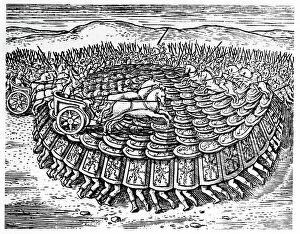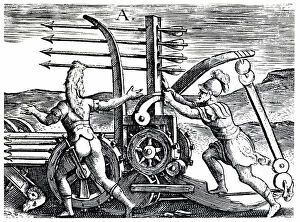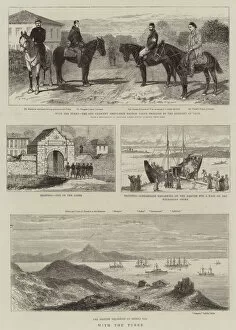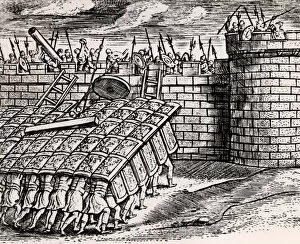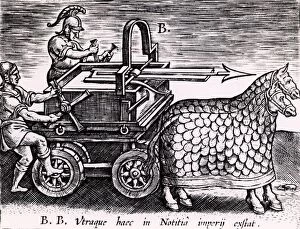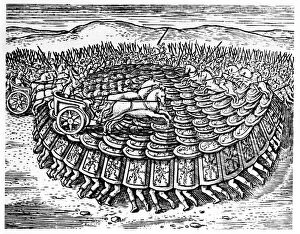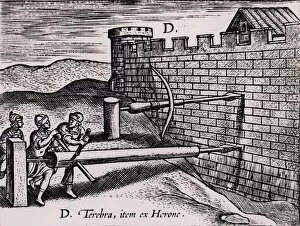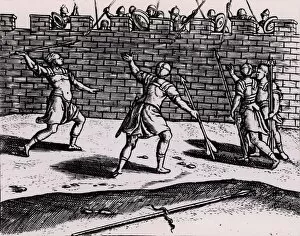Telis Collection
"Telis: Unleashing the Power of Ancient Roman Warfare" Step back in time and witness the might of Telis, the ingenious war machines that shaped ancient Roman warfare
For sale as Licensed Images
Choose your image, Select your licence and Download the media
"Telis: Unleashing the Power of Ancient Roman Warfare" Step back in time and witness the might of Telis, the ingenious war machines that shaped ancient Roman warfare. With intricate engravings depicting scenes of valor and strategy, these artifacts offer a glimpse into a bygone era. Marvel at the sight of Roman soldiers forming an impenetrable tortoise formation with their shields, providing unparalleled protection against enemy attacks. This remarkable technique enabled them to advance fearlessly on the battlefield. Reconstructed before your eyes is a formidable war engine capable of launching a salvo of arrows, raining down destruction upon their adversaries. Mounted on carriages drawn by two majestic mailed horses, this awe-inspiring contraption showcased Rome's mastery over military innovation. Witness another marvel as Roman soldiers create an impregnable Tortoise formation strong enough for chariots to drive over. The sheer strength and unity displayed here were unmatched, showcasing their unwavering determination in conquering any obstacle. Delve deeper into technological prowess with Philo of Byzantium's mechanical crossbow on stand (euthytonon). Dating back to 150-100 BC, this invention revolutionized long-range combat tactics and proved instrumental in securing victories for Rome. Another reconstruction reveals a sophisticated machine designed specifically for shooting arrows with precision timing. As it winds up ready for release, imagine its devastating impact on enemy lines during intense battles. Behold towering siege towers strategically positioned to grant attackers an advantage above city walls. These structures provided Romans with elevated positions from which they could rain down projectiles upon unsuspecting foes. Watch as brave soldiers employ two forms of battering ram against fortress walls – relentless strikes aimed at breaching even the most fortified defenses. Witness firsthand how perseverance and ingenuity triumphed over seemingly insurmountable obstacles. Discover yet another tool utilized by Romans - augers used in siege warfare to drill into fortress walls.

